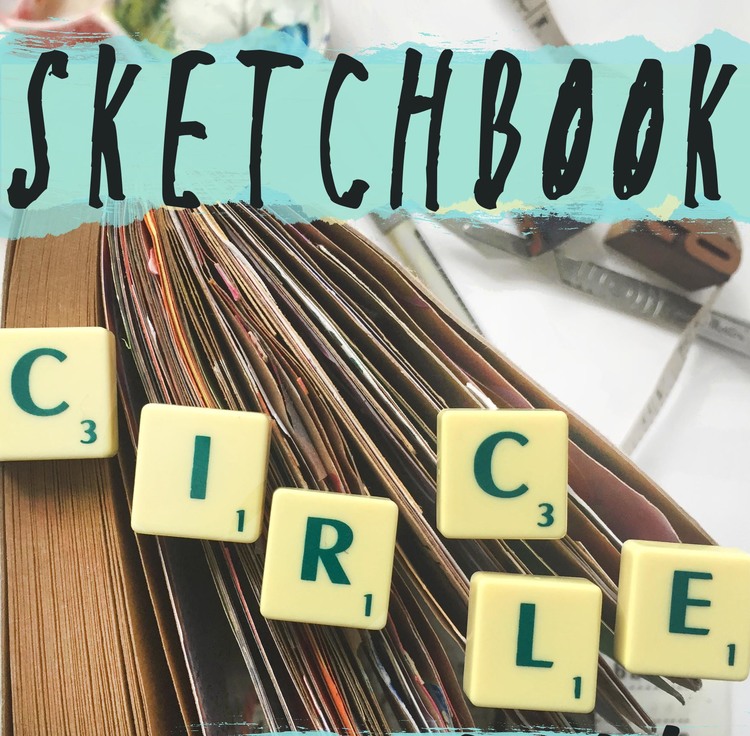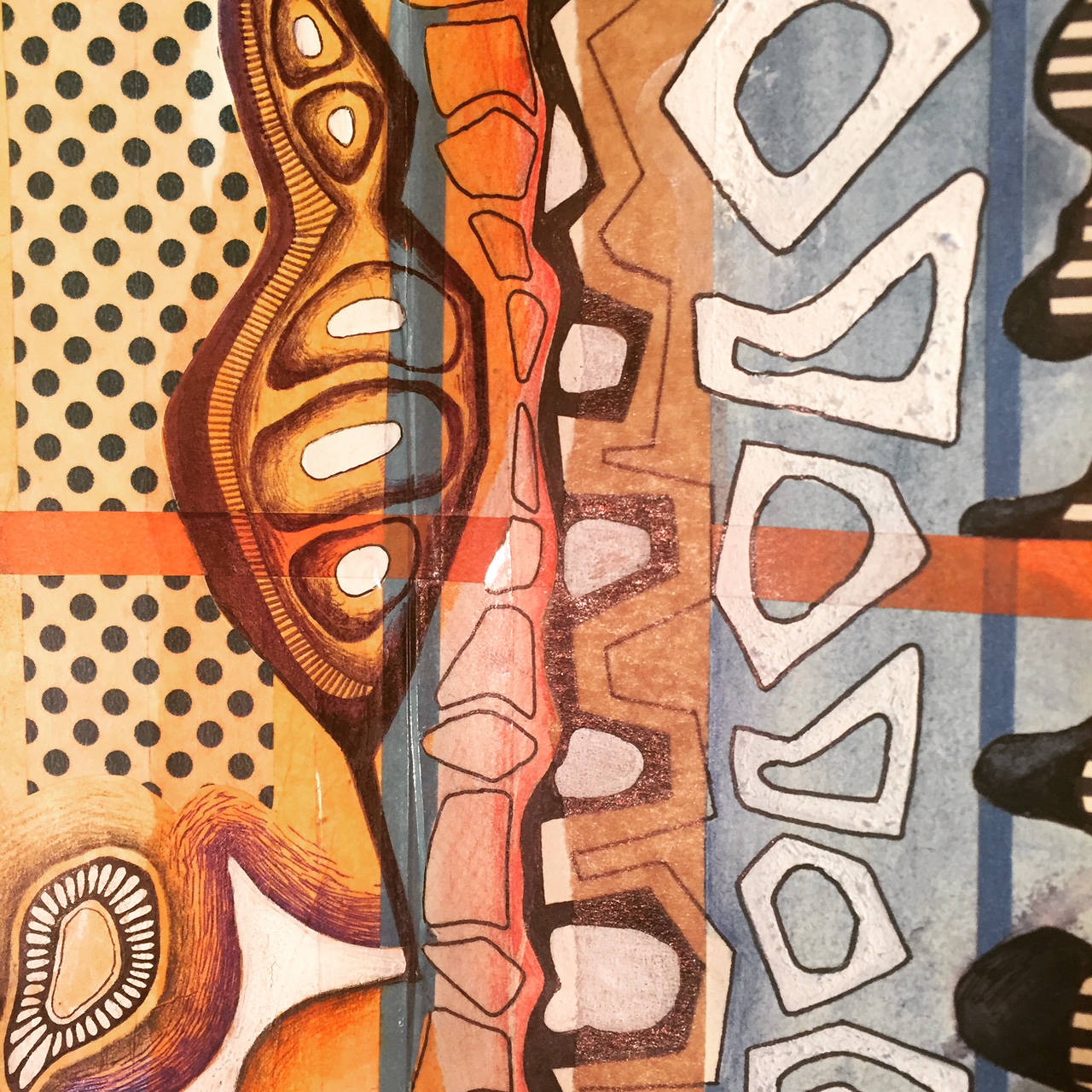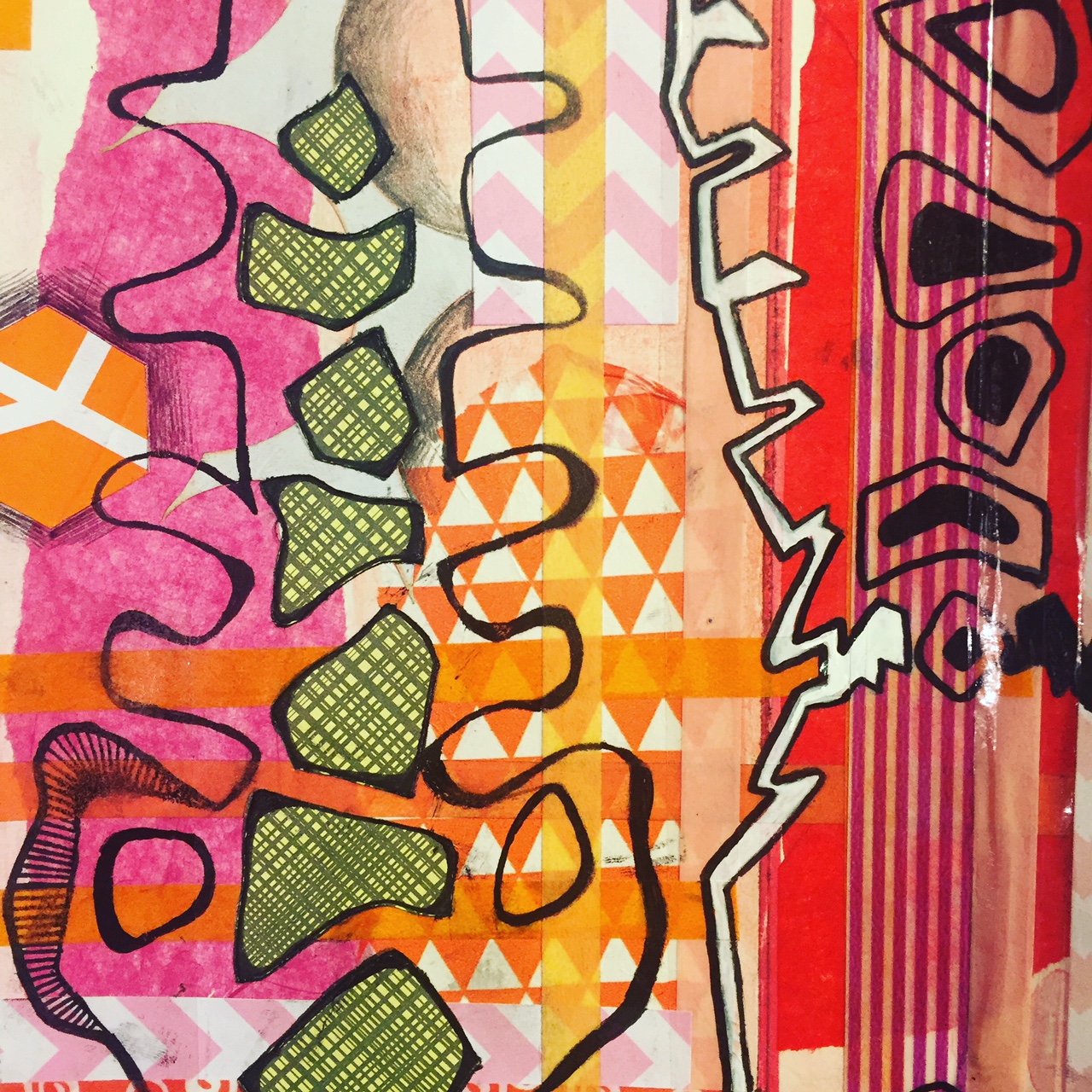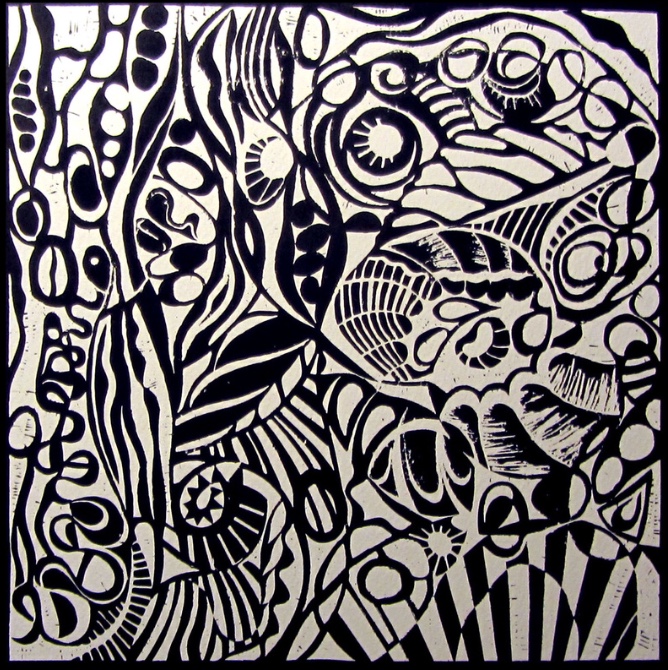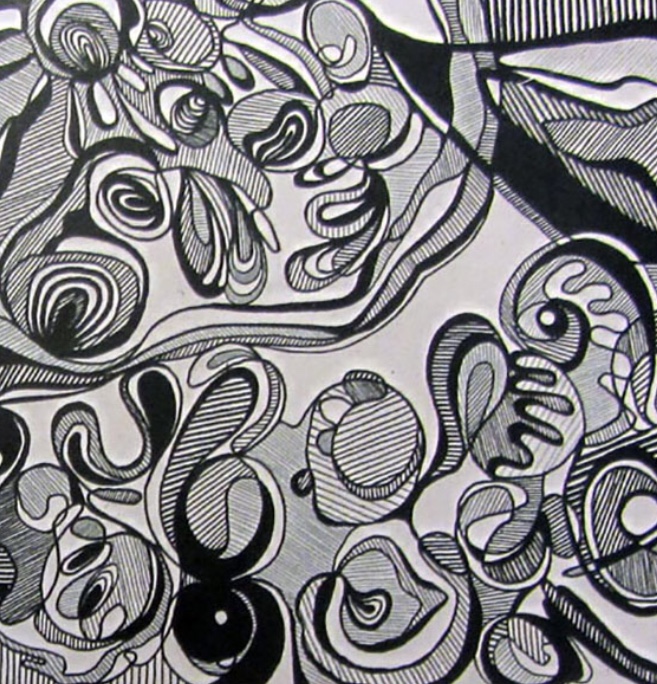Tell us about your work:
My work is inspired by a broad range of subject matter, from natural forms and organic shapes to geometric lines, structures and organized patterns. Contrasting these disparate elements and combining them to make something new, is always exciting and a challenge I enjoy.
I am a mixed media artist working primarily with lino and paper cut, drawing, photography and watercolour mediums. I enjoy experimenting with the layering of images and materials and the combinations that are possible in order to render an image. I aim to derive clarity and order from something that could be considered chaotic or mysterious, such as the growth of natural forms and plants, or the structures and systems that support our everyday existence such as maps and networks. I carefully break down ordinary, everyday forms into their fundamental and identifiable parts and reconstructed them in such a way as to question the viewer.
Nature has a pattern and order to it that is not determined by humans, although we do try to organise and make sense of this. I am fascinated by the structures and systems we use such as maps, diagrams, grids and text, that turn vast areas of information like land, space, data, behaviour and language in to something manageable and understandable; order from chaos. I also enjoy breaking down complicated structures or ideas to its basic components, starting with shape, line and colour.
I used to mostly work in lino printing, however drawing and pen work play an increasingly important part in my work these days. This has become more prominent as my work has changed dramatically in the last four years through being involved in sketchbook circle and responding to the work of a variety of talented artists. There has always been a graphic quality to the visual images I create and an organized and structured look and feel to them. However, very often I respond to 'happy accidents' as they happen and work with what I am given in order to forge something new and unexpected. Although a challenge at first when this occurred, I now welcome the unexpected as an opportunity for my work to develop in unusual ways; I am now far more willing to give over to entropy.
This method of working does not come naturally to me and again is a result of taking part in sketchbook circle for the last four years. Being actively involved and collaborating in a visual dialogue with other artist teachers has helped to motivate and inspire my work in new and exciting ways, which I could not have predicted before taking part. This is an important aspect of my practice and is always changing, responding and adapting to the work of others, be that artists, teachers or even students.
What creative project are you currently working on?
In the last two years I have made a more conscious effort to exhibit my work more regularly in local galleries and exhibitions. Usually, the themes are broad and open to a variety of work and styles. This year, however, I have been selected as one of fifty artists to create and exhibit work in response to a project called “Fifty Bees”, the aim of which is to illustrate the diversity of Britain’s bee population and their delicate ecosystems that are under serious threat. The range of work involved is diverse and collectively will aim to present an informative and stimulating conversation about these creatures. With my love of bees this opportunity aligns perfectly with my interests, whilst providing a challenge in the ways it could be approached. I think it is vital that more people are aware of just how important bees are to the ecology of the British Isles and what better way to share this message than with art?
The exhibition will take place in June this year at the Richard Jefferies Museum in Swindon.
How does your creative process work?
I have always found the initial stages of any project both exciting and daunting in equal measure. There is nothing scarier than a blank piece of paper, and I would sometimes find it agonising to make those initial marks and blemish the page, quite often being dissatisfied with the results; I struggled to do anything that wasn’t controlled. Then a few years ago, I received my partner’s sketchbook through the post and it changed my working practice forever. The sketchbook was an A5 concertina sketchbook, with one long single page folded in to smaller ‘pages’ that showed a continuous and developing piece of work when unfolded, rather than lots of individual pieces. No longer did I have to always start something fresh, but instead I simply carried on from where my partner had left off, quite often working back in to something from months ago. Everything was a work in progress, until you just knew it was done. I found this way of working liberating, and it has stuck with me ever since. When I began the Artist Teacher Scheme at Oxford Brookes University, the initial task to introduce us to our colleagues and lecturers was to present something that showed our inspirations and chosen method of working. I made a concertina sketchbook, which I began by punctuating the long strip with the work of artists and images I found inspiring. My self-imposed challenge was to then join these up in a seamless strip of colour, line, shape and pattern that moved from images of barnacles, skeletal structures and modern architecture to the work of Henry Moore, Derek Lerner and Ebon Heath. This sketchbook is A6 in size and is still going; I carry it with me at all times, along with my travel art kit, ready to create anytime and anywhere.
What materials could you not live without?
The list grows constantly but there are some key materials that I have with me at all times that I could not be without. Firstly my Rotring Tikky Pencil 0.35mm is my go to when starting any piece of work. I use diluted black Quink ink in a water brush pen, along with a mini travel set of Windsor and Newton Cotman watercolour paints when putting down any grounds or washes. Along with staedtler coloured pencils and fine liner pens, I use white gel pens and a large white marker pen to block out larger areas. When working on a larger scale I have started to experiment with lino printing on to clear sheets of plastic and then using sun sensitive papers to make a cyanotype print. My ‘toolkit’ adjusts to the style and scale of work I am producing, but these are definitely my go to materials.
Where do you search for creative inspiration?
I am a full time art and photography teacher, and in the past I have struggled to balance my school work, with more personal work. I find inspiration from the projects I create and the lessons I teach, and particularly the work my students produce in response. The school trips to galleries and museums, such as our annual pilgrimage to the Pitt Rivers museum in Oxford always furnish me with ideas also. More recently my own work has begun to direct the schemes of work I am producing for the classroom, with the development of more printmaking and large scale mixed media drawing and an ethos of making mistakes and responding positively to the unexpected has begun to be more common among my students. Pinterest is my initial source of inspiration (georginabruce), but I have recently begun to use instagram (gbruceart), which has been an unexpected source of inspiration in recent months. However, I find that my stronger and more substantial ideas come from simply playing with contrasting imagery in unusual ways, through collage or digital manipulation. Most recently maps and text have been of particular interest and I enjoy collecting and combining these elements to drive my ideas forward.
What is the best piece of creative advice you’ve been given?
It doesn’t need to be perfect, you need to make mistakes and get things wrong. Finding out all the ways something doesn’t work for you, gives you a better idea of exactly what it is you’re trying to do, and what is possible. I don’t know if this was advice I was given, or just something I learned over time. It was, however a lesson I needed to learn and something I am still endeavouring to do.
